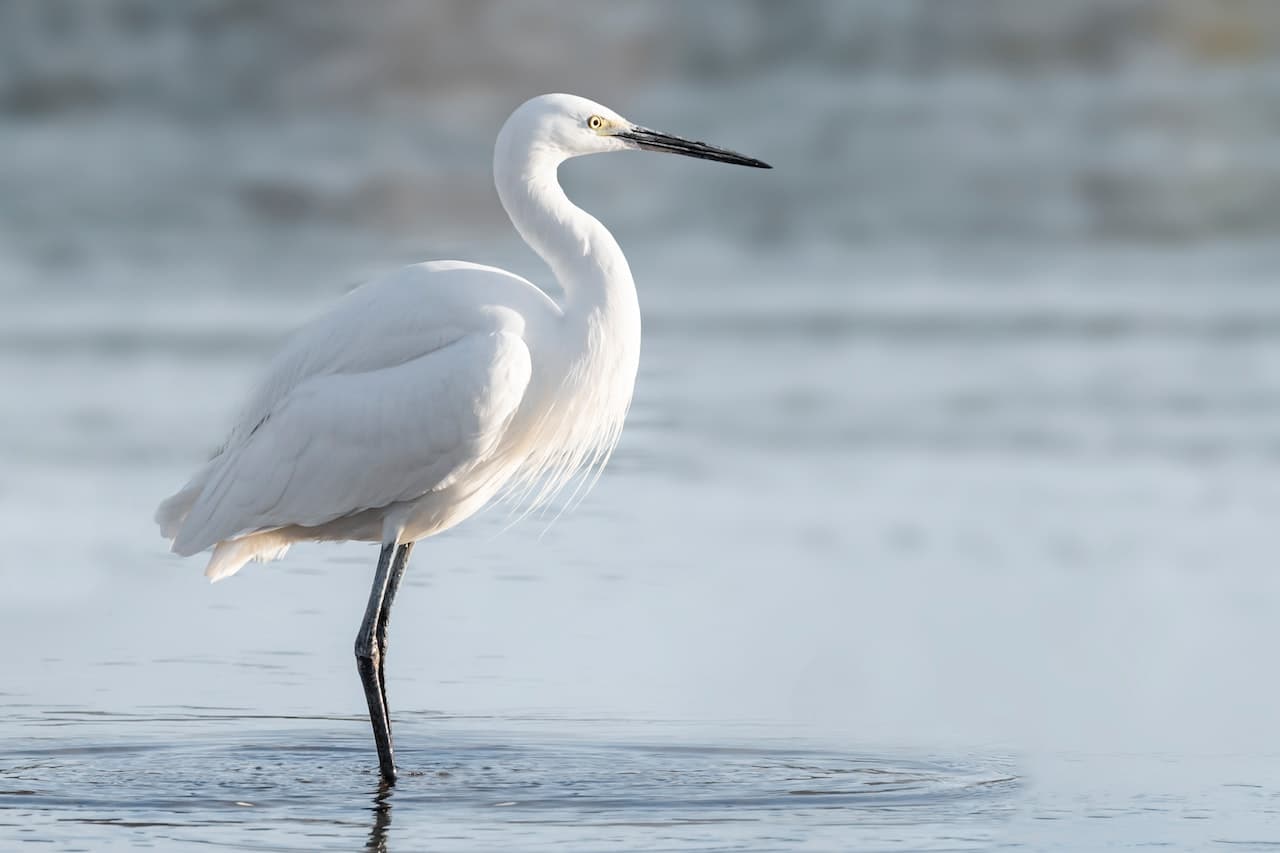Egrets are herons, the wadding birds with long legs and white plumage that look absolutely graceful. All egret species have beautiful plume features, and this beauty has brought doom to their population due to relentless plume hunting. In Cambodia, 5 egret species among over 10 species are currently residing in various parts of the country. Want to find out what they are? Feel free to check out the list below.
Cattle Egret (កុកគោ)
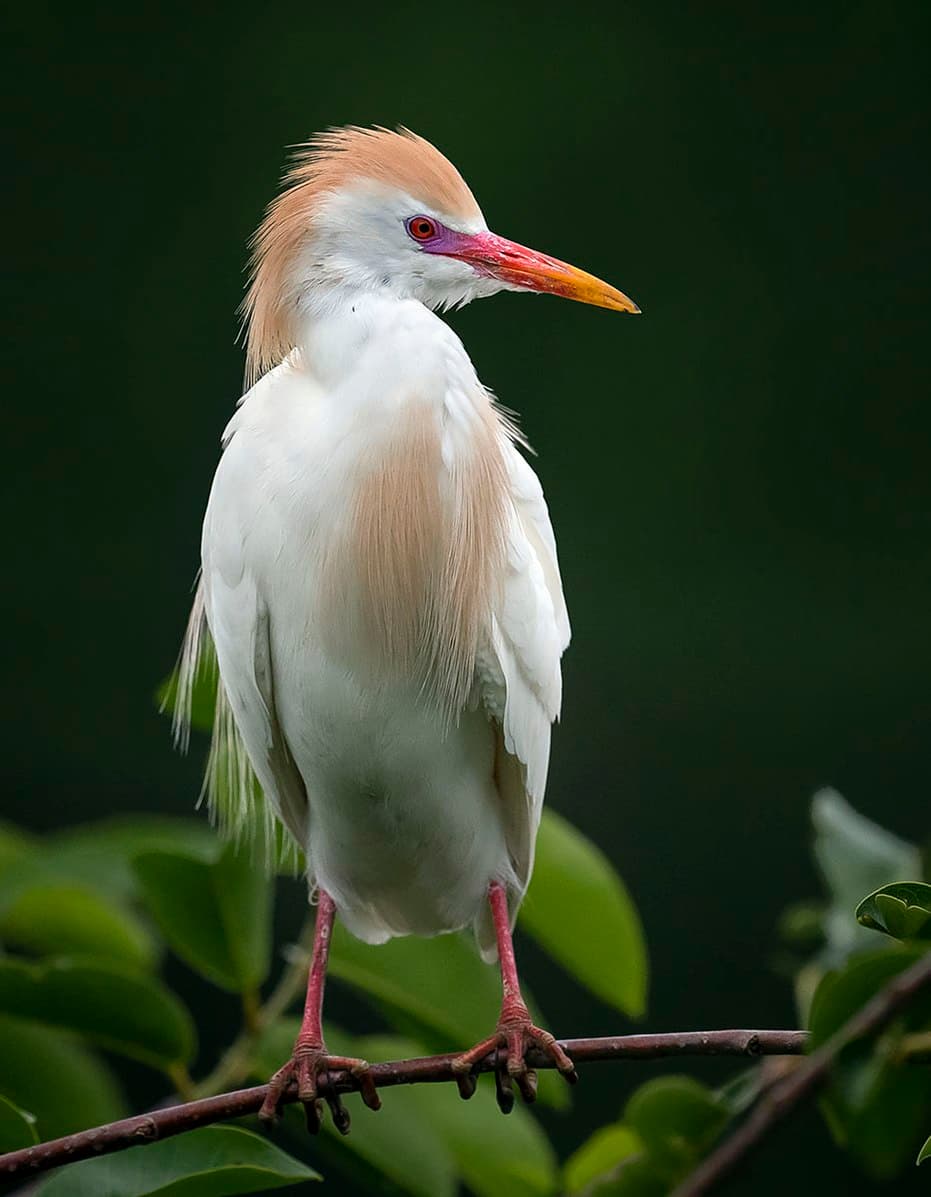
This egret species has a stocky look, growing up to 46 to 56 centimeters tall with a wingspan of 88 to 96 centimeters. It has a short thick neck with a sturdy bill, and this bird has a hunched posture. Adults have white plumage with a yellow bill and grayish-yellow legs but their colors change in the breeding season. When the breeding season comes, adults will develop orange-buff plumes with bright red bills, legs, and irises.
Cattle egrets are very social, and they gather in large colonies of their own kind and other bird species. They normally hang out in dry grassy habitats and in fields, feeding on terrestrial insects. Some of their favorites are beetles, crickets, earthworms, flies, grasshoppers, lizards, moths, small snakes, and spiders. However, they also feed on aquatic prey such as fish and frogs in shallow water sometimes. In the wild, crested caracaras are one of the main predators that kill and prey on them.
Great Egret (កុកគ្រោងធំ)
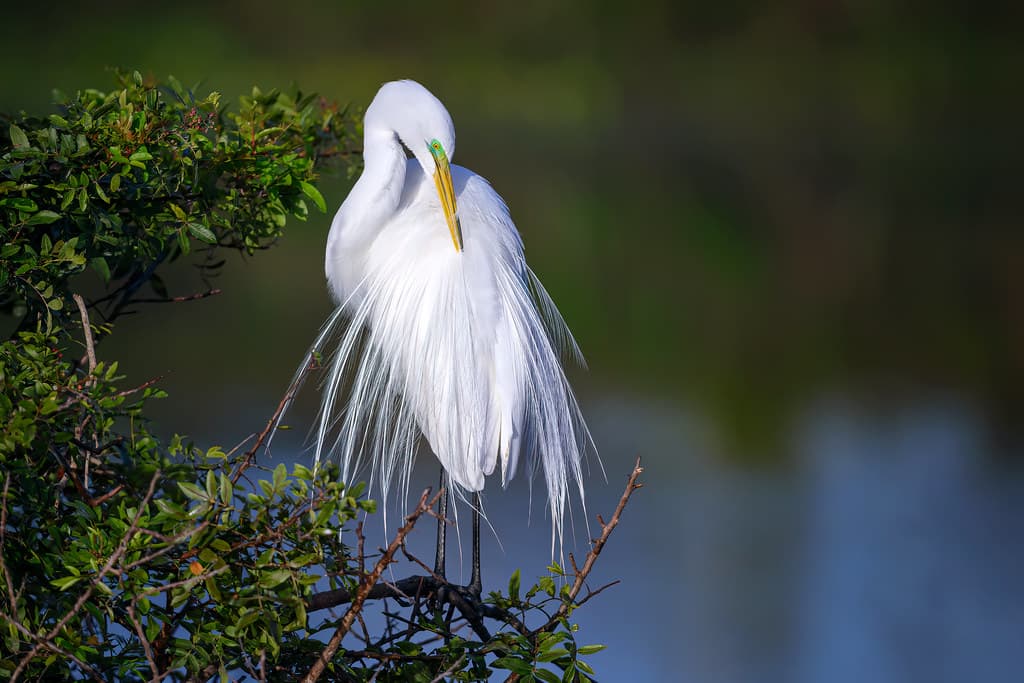
The great egret aka common egret or great white heron is a large egret species with a wide distribution. It stands up to 1 meter tall or even taller, with a wingspan of 1.31 to 1.70 meters long. This bird has all-white plumage, a yellow bill, and black legs and feet. During the breeding season, the bill will get darker and the lower legs will become lighter. At the same time, a patch of skin on its face will turn neon green with long plumes growing from its back.
With a wide range, this egret species occurs worldwide in temperate and tropical habitats, both in freshwater and saltwater. In those habitats, they forage in shallow water where they feed mainly on fish, frogs, small mammals, and other amphibians. Occasionally, they also feed on crustaceans, insects, and small reptiles as well. They do hunt while wading but they also hover over the water and drop for fish or swim to capture prey.
In the late 19th century, people hunted them nearly to extinction for their plumes which sparked conservation movements. Since then, their numbers started to increase substantially which is a great thing.
Intermediate Egret (កុកគ្រោងមធ្យម)
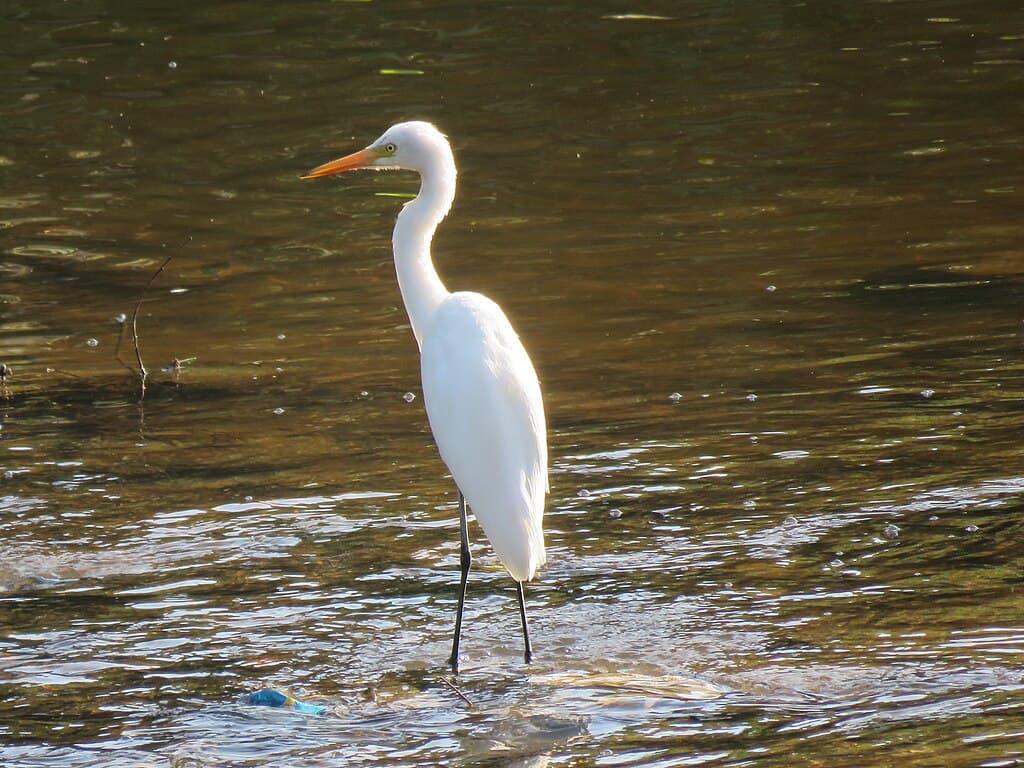
Looking absolutely graceful, this egret species has all-white plumage with dark legs and a thickish yellow bill. Just like the name suggests, it is intermediate in size which is about 56 to 72 centimeters tall. Smaller than the great egrets but bigger than cattle egrets and little egrets. They inhabit rice fields, ponds, and salt marshes in Africa, Australia, and Southern Asia. These egrets spend their time during the day stalking and hunting their prey in shallow coastal or fresh water. Their common meals are crustaceans, insects, fish, and frogs.
Little Egret (កុកគ្រោងតូច)
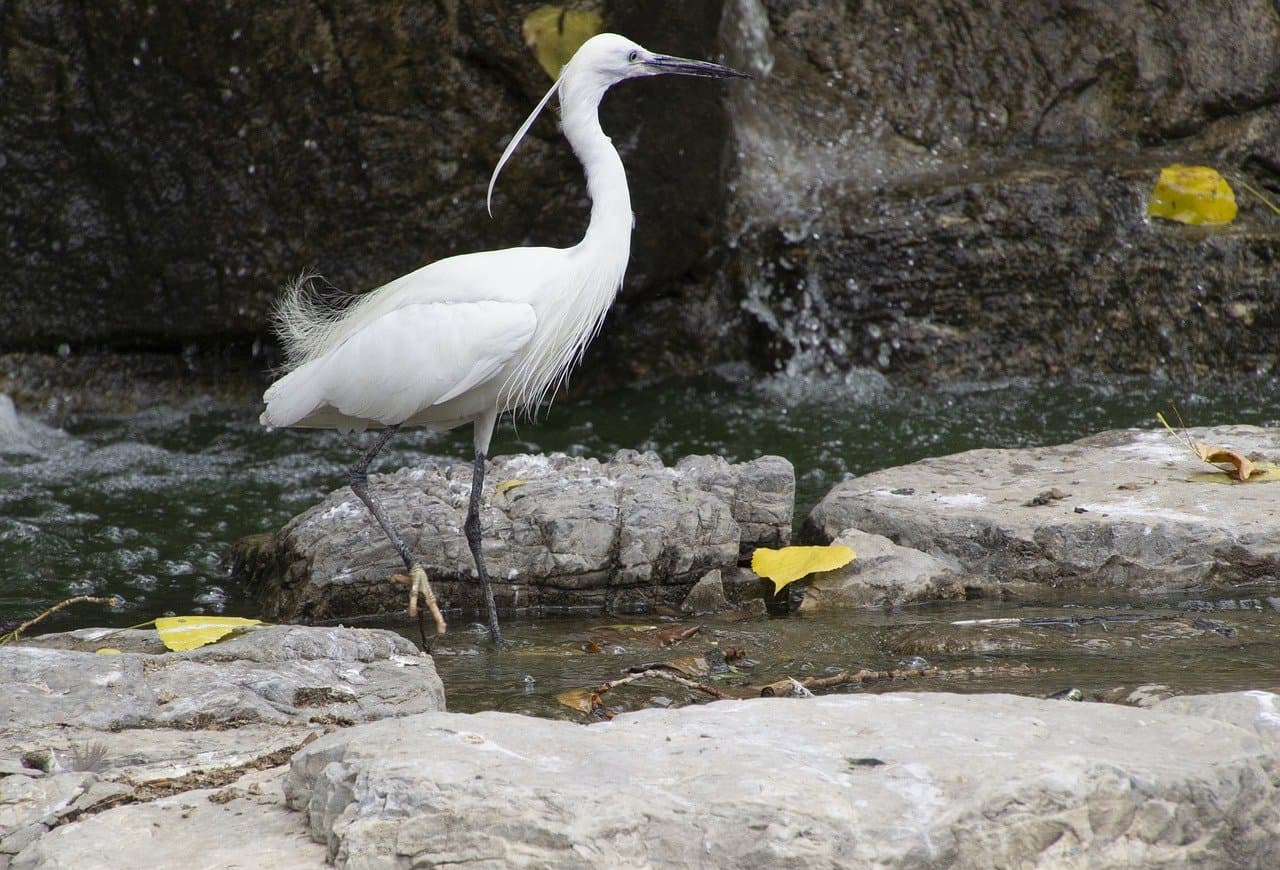
When it comes to elegance, little egrets execute the definition very well. This is an egret species that has a white body with a slender black beak and long black legs. As a small bird, a little egret only grows up to 55 to 65 centimeters long. It has entirely white plumage, and adults have two long plumes on the nape that form a crest in the breeding season. Generally, they are quiet birds but they also make various bubbling calls and croaking or produce a harsh alarm call.
The little egrets inhabit a wide range of habitats such as canals, flooded lands, lagoons, lakes, marshes, and rivers. They also live on the coast, mostly in mangrove areas, mudflats, reefs, sandy beaches, and swamps. Not different from other egrets on the list, this one is also an aquatic bird. It feeds a variety of small creatures both on land and in shallow water such as amphibians, birds, and fish. At the same time, they also eat crustaceans, insects, invertebrates, mammals, mollusks, small reptiles, spiders, and worms.
Pacific Reef Egret (កុកសមុទ្រ)
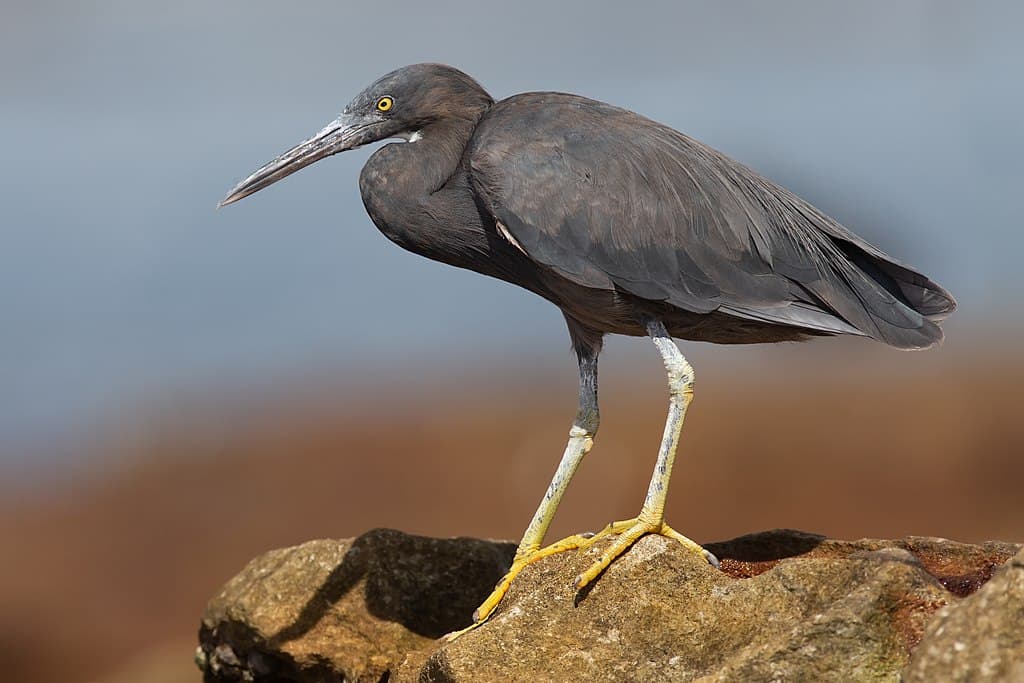
The Pacific reef egret or eastern reef heron is a medium-sized bird that grows up to 57 to 66 centimeters tall. What’s unique about this egret species is the unusual non-sexual dimorphism that they have. Some have entirely white plumage while others are charcoal gray, and the reason for this color variation is unknown. However, generally, these egrets have brown beaks, gold-yellow eyes, greenish to yellow cast faces, and yellow-gray legs.
This egret species has a wide range across Oceania and Southern Asia, usually around the coastline and offshore islands. On the mainland and larger islands, they prefer sheltered islands with rocky shores with nearby reefs. They also occur around beaches, creeks, inter-tidal mud flats, mangrove-lined shorelines, and tidal rivers. Within their habitats, they primarily feed on crustaceans, fish, mollusks, and worms.
Related Post: Wetland Duck Species In Cambodia
